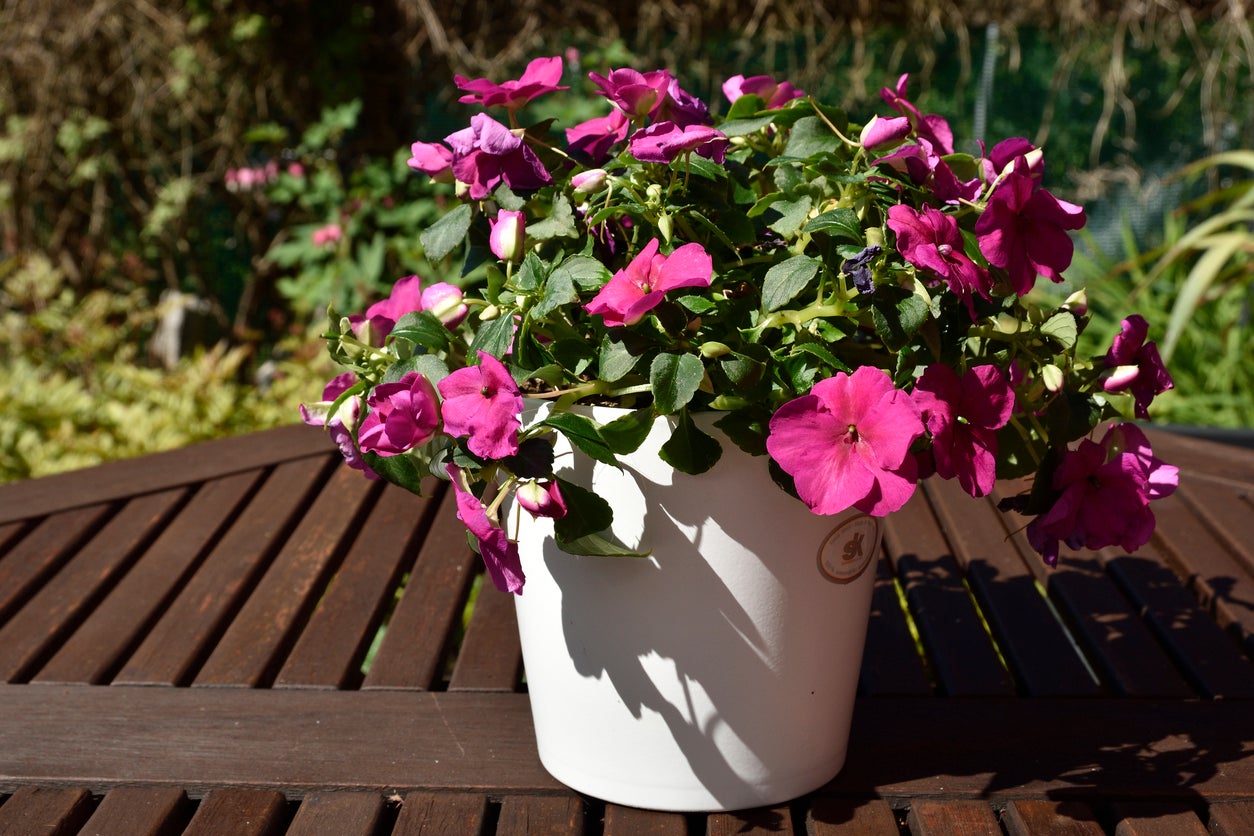Houseplant Impatiens: How To Keep Indoor Impatiens Plants


Impatiens have long been one of the most common additions to landscape plantings and annual flower beds. Readily available in garden centers and at plant nurseries, these easy to find flowering plants thrive in shady locations. Due to this, impatiens are excellent candidates for container culture indoors throughout the winter. Keep reading to learn more about caring for indoor impatiens plants.
Can You Grow Impatiens Indoors?
Though most commonly grown as a tender annual bedding plant due to their inability to tolerate frost, impatiens plants that have to be brought indoors can easily and reliably be grown throughout the winter months. This relatively simple process will offer gardeners lush growth and blooms during the coldest times of the year.
How to Grow Impatiens as a Houseplant
The first step in the process of growing these plants indoors is bringing impatiens inside. If the outdoor impatiens were grown in a container throughout the summer, those plants can be gently trimmed back and then moved indoors. If impatiens plants have been grown in the garden, the easiest solution is to take impatiens cuttings during the late summer. To take impatiens cuttings, simply remove a portion of the stem about 6 inches (15 cm.) long. Remove all but one or two sets of leave from the bottom of the cutting. Place the cutting into a well-draining growing medium. Ensure that the mixture remains moist. After a few weeks, roots will have developed and growers can transplant into a new container indoors. Since impatiens are known to root quite easily, the use of rooting hormone is not necessary. Once the plants have been taken indoors and planted into a well-draining container, an essential key to success is the selection of an optimal growing location. While they are somewhat tolerant of low-light conditions, the lack of sunlight throughout the winter months can negatively impact the growth of impatiens. For this reason, it is important to place the container in a sunny, south-facing location. Gardeners unable to provide proper light conditions may also have success using supplemental grow lights. Houseplant impatiens grow best when temperatures are not allowed to drop below 55 degrees F. (13 C.). This will ensure steady growth conditions conducive to flowering throughout the winter. Throughout the growth period, plants should be kept consistently moist, making certain to avoid waterlogged soil and the potential for root rot. Lastly, plants may need occasional misting when humidity is low. When properly cared for, the process of growing impatiens indoors can reward gardeners with steady bursts of color until spring arrives the next growing season.
Sign up for the Gardening Know How newsletter today and receive a free copy of our e-book "How to Grow Delicious Tomatoes".

Tonya Barnett has been gardening for 13 years. Flowers are her passion. She has transformed her backyard into a cut flower garden, which she regularly chronicles on her YouTube channel http://www.youtube.com/@tonyawiththeflowers.